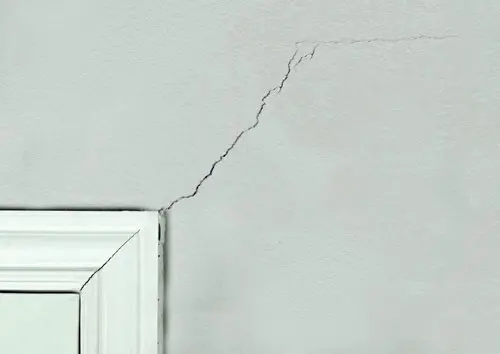Ceiling cracks can be a common occurrence in many homes and can result from various factors, including structural settling, temperature fluctuations, or moisture issues. Understanding the types of ceiling cracks is essential for effective repair and maintenance. In this article, we will explore the various types of ceiling cracks, complete with pictures to help you identify and address them.

1. Hairline Cracks
Description: Hairline cracks are extremely thin cracks that may appear in a straight line or a spiderweb pattern. They are often barely visible and can result from minor settling or temperature changes.
2. Settlement Cracks
Description: Settlement cracks are common in both old and new homes. They occur as the building settles, and they often follow the natural lines of construction materials. These cracks can be more noticeable than hairline cracks.
3. Expansion and Contraction Cracks
Description: These cracks occur due to the natural expansion and contraction of building materials in response to temperature and humidity changes. They are often more pronounced during extreme weather conditions.
4. Stair-Step Cracks
Description: Stair-step cracks form a pattern resembling a staircase. They are typical in masonry or brick ceilings and can indicate structural movement or settling issues.
5. Sagging Ceiling Cracks
Description: When a ceiling sags, it can develop cracks along the area of the sag. These cracks are often a sign of a more significant structural issue and should be addressed promptly.
6. Water Stain Cracks
Description: Water stain cracks occur when water infiltrates the ceiling, leaving behind a discolored mark along with the crack. Identifying the source of the water infiltration is crucial to prevent further damage.
7. Popcorn Ceiling Cracks
Description: Popcorn ceiling cracks appear in textured or popcorn ceilings. These cracks can be challenging to repair, as they require matching the texture of the surrounding area.
8. Drywall Joint Cracks
Description: Drywall joint cracks often occur at the seams of drywall sheets. They can result from poor installation, house settling, or temperature fluctuations. Proper taping and patching are essential for repairs.
How to Address Ceiling Cracks
Addressing ceiling cracks depends on the type and severity of the crack. Here are some general steps to consider:
- Assessment: Begin by identifying the type of crack and its cause. This will help determine the appropriate repair method.
- Surface Repair: For minor cracks, you can use a joint compound or patching material to fill the crack. Sand and paint the repaired area to match the ceiling.
- Structural Assessment: For significant cracks, especially those related to sagging or structural issues, consult a professional for a thorough assessment and repair.
- Moisture Control: If water stains are present, address the source of the water infiltration, whether it’s a roof leak, plumbing issue, or condensation problem.
- Texture Matching: When dealing with textured ceilings like popcorn ceilings, matching the texture can be challenging. Consider consulting a professional for these repairs.
Read too: Can Clogged Gutters Cause Ceiling Leaks
Conclusion
Ceiling cracks come in various types, each with its own causes and repair considerations. Identifying the type of crack and understanding its root cause is essential for effective repair and maintenance. Whether it’s a minor hairline crack or a more significant structural issue, addressing ceiling cracks promptly can help maintain the integrity and aesthetics of your home.